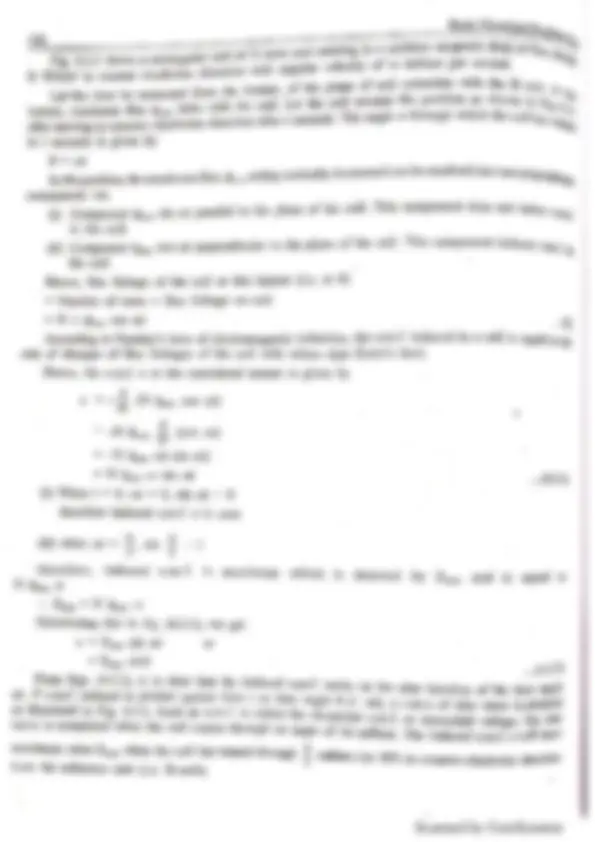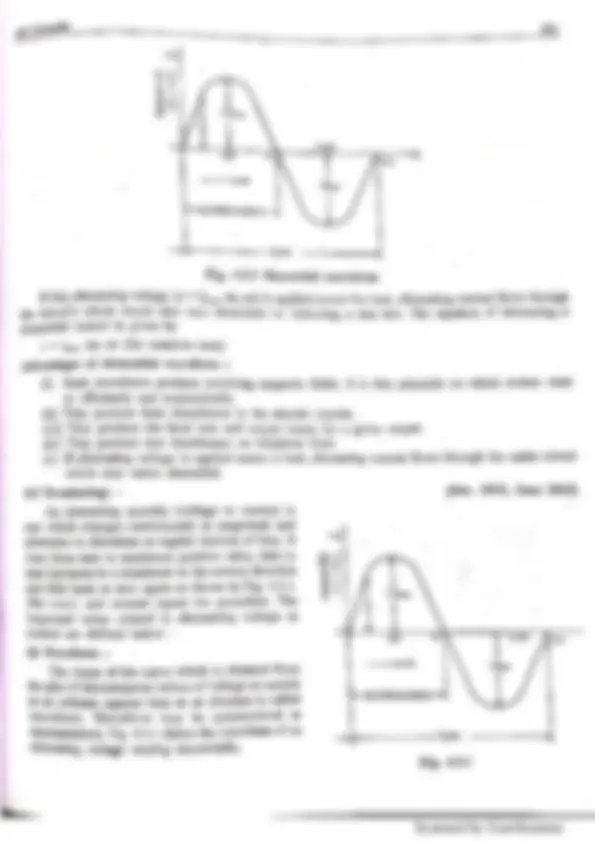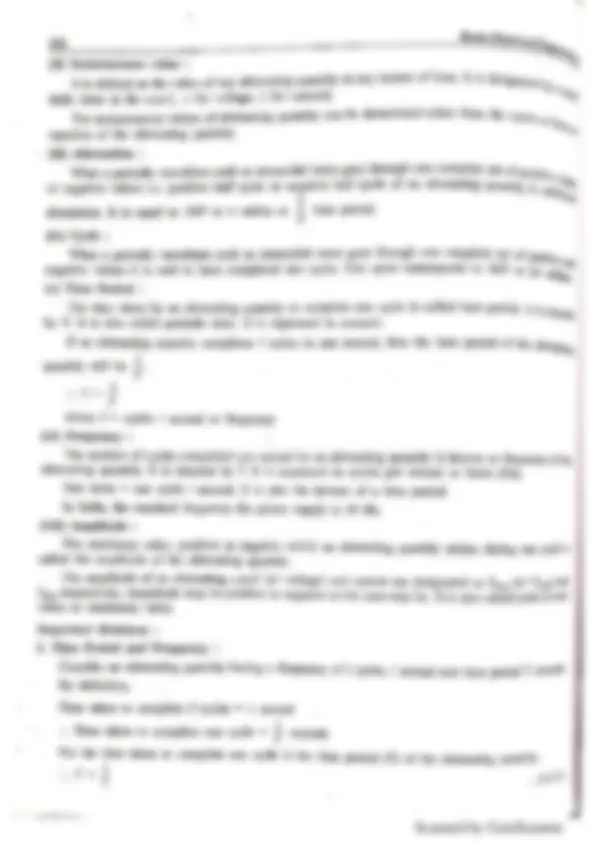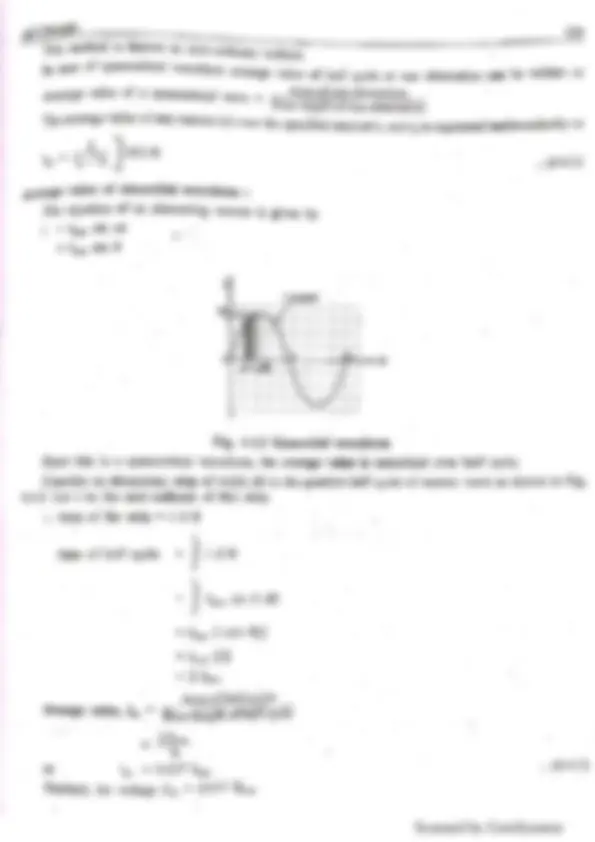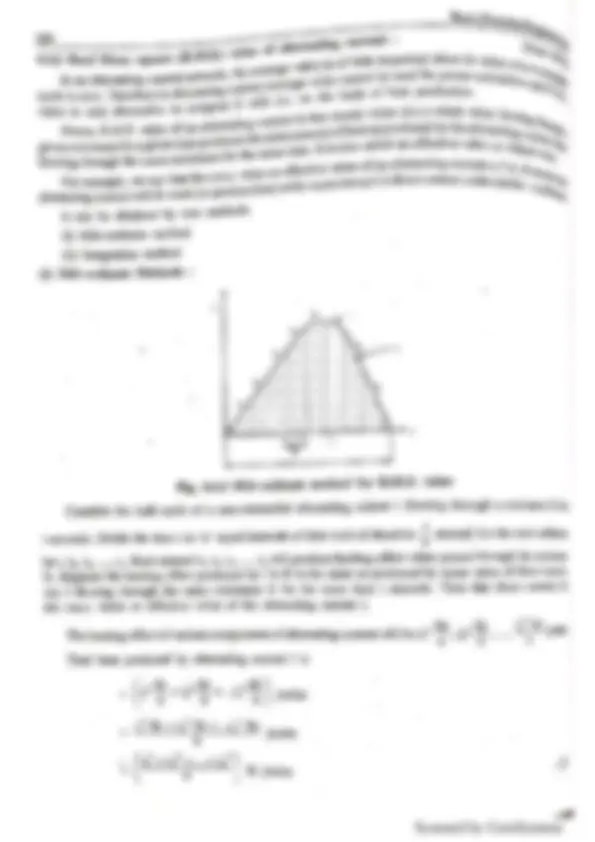Partial preview of the text
Download basic electonics and electical and more Thesis Electromagnetism and Electromagnetic Fields Theory in PDF only on Docsity!
| 7S G I} 0 AC CIRCUITS — Generation of sinusoidal voltage, Definitions of factor and peak factor, phasor representation of alte: of R, L, C, R-L, R-C and R-L-c circuits, and power factor, series, parallel and seri improvement, Resonance in series and Pp average value, Root mean square value, Form mating quantities, Analysis with phasor diagrams Concept of real power, reactive power, apparent power es-parallel circuits. Power in ac circuits. Power factor arallel circuits Q-factor, Bandwidth and selectivity. 4,1 Introduction : In earlier chapters we have dealt with direct current (d.c.) which flows continuously in one direction. Due to change in voltage or circuit resistance the circuit current will change in magnitude but flows in the same direction. Such a current is called pulsating current. When the current flowing in the circuit varies in magnitude as well as direction periodically it is called alternating current (a.c.). For large-scale power distribution, there are many advantages in using alternating current. Alternating voltage can be stepped up or down efficiently by means of transformer. This permits transmission of electric power at high voltage to achieve economy and distribute the power at utilization voltage. Motors working on a.c. are cheaper. Switchgear for a.c. systemr is simpler. In this chapter we will confine our attention to the fundamentals of alternating currents and single-phase a.c. circuits. 4.2 Generation of Sinusoidal Voltage : [June 2014, Jan. 2015] An alternating voltage can be generated either by rotating a coil in a stationary magnetic field or by rotating field within a stationary coil. In both cases, magnetic field is cut by the coil and the e.m.f. is induced in the coil according to Faraday’s laws of electromagnetic induction. The magnitude of induced em.f. depends upon the number of turns of the coil, the strength of the magnetic field and the speed at which the coil or magnetic field rotates. In either case the generated voltage will be of sinusoidal waveform. Y aa | LP « _| lA x Li ” LA | ‘Oma COS ort \ You Omax Fig. 4.2.1 Generation of e.m.f. [129] BEE_2019/17 Scanned by CamScanner Basic Electrical Engin ee 130 N turns and rotating in a uniform magnetic field of fy, lar coil of Fig. 4.2.1 shows a rectangular ith angular velocity of o radians per second, B Wh/m? in counter clockwise direction Wi Let the time be measured from the instant, of the plane of coil coincides with the X-axis, Att Let the coil assume the position as shown jn Fig. 4 I instant, maximum flux dma links with the coil. after moving in counter-clockwise direction after t seconds. The angle 7 through which the coil has Toate in t seconds is given by 6 = ot In this position, the maximum f1ux, $max components viz. (i) Component max Sin at parallel to the plane of the coil. This component does not induce ems, * deny, acting vertically downward can be resolved into two Perpendicuty in the coil. (ii) Component dmx ¢0S wt perpendicular to the plane of the coil. This component induces em, ; in the coil. Hence, flux linkage of the coil at this instant (i.c. at 0) = Number of tums x flux linkage on coil =N x bmx Cos wt According to Faraday’s laws of electromagnetic induction, the e.m.f. induced in a coil is equal to the rate of changes of flux linkages of the coil with minus sign (Lenz’s law). Hence, the e.m.f. e at the considered instant is given by -fi) d e =a ON dma cos wt) ; =-
